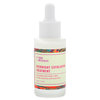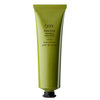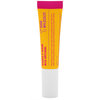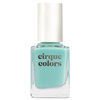

The Wonders Of The Weave Part 2
"Myths and Must-Haves" by Dre Brown
At one point in brown girl beauty history, "If you can't grow it, sew it!" was often touted as a mantra to justify "embellishing" one's coif with an extension or two. That quip sure had a ring to it, but was all wrong in setting the tone for how many brown girls view weaves. I recall first hearing it and thinking a weave was simply a remedial measure for those whose hair growth was stuck in neutral. But now with the evolution of brown girl hair culture, the saying could easily remix to: "If you can grow it, fro it, flow it, cornrow it, mow it, or blow it—you can surely sew it." We now find the myth that weaves are beauty's bad hair Band-Aids couldn't be further from the truth.
Uncovering the truth about weaves didn't take digging through proverbial beauty skeletons hiding in the closets of select brown girls. Simply soliciting the wisdom of a master weave craftsman could bring to light many of the realities that women don't consider when objecting to weaves or ruling them out as beauty options for themselves. And so, to the source I went. I sought out none other than celebrity stylist and creative hair visionary Sean Cameron of the renown Elgin Charles Salon in Beverly Hills. Known for "keeping it real" with clients, while educating them about healthy hair styling in an unmistakably honest manner, Sean's point of view helped shake loose some of the myths tangled within weave's well-wefted past.
"When you're a good hairstylist you can make a teaspoon of hair look good!" Sean boasts when asked about the 50% of his client business dedicated to weaves or weave-related styling. "But it's a goal for me to get clients to the place where they can wear their own natural hair." He notes that weaves are often a means to an end for clients and represent a viable style option for achieving the flair, convenience, or image woman seek—regardless of their natural hair length. "I support weave as well as your own God-given hair, and seek to give my clients options to wear both."
On the topic of stigma, Sean recalls witnessing the change in the dialogue around weaves over the years. "In the '90s the notion of a weave being a bad thing arose. People would align it with being bald or not being 'real.' Now the tide is turning and it's popular with everybody. At the end of the day, the weave was just to add to what you already had—not to turn you into someone else," he explains.
With an extensive clientele spanning from actresses to business professionals, Sean attests to a far broader acceptance of hair extensions and their universal utility nowadays. "Most times, clients are pretty knowledgeable. The only time I have to educate is when they are inexperienced and have never had a weave done. At Elgin Charles Salon, we take a simple approach to styling. There's always a reason for the application that's specific to the client—from finding a remedy for a problem like hair loss or breakage, to helping them get the certain look they want in order to stand out in Hollywood."
But, even with greater awareness and understanding of weave culture, Sean still insists that women take precise steps to ensure they get the most out of their hair investment—starting with the stylist. When shopping for an extension engineer, Sean advises the following:
-
Discuss what you want at length with a potential stylist to make sure they appear knowledgeable.
-
Examine a stylist's work ethic in order to establish trust.
-
Take referrals from women whose hair you admire, or reach out to a stylist's references for endorsement.
Once a stylist is in the bag, next up is making the proper hair purchase. We've all heard the astronomical ranges of prices women pay for quality hair, starting in the hundreds and reaching into the thousands. When asked what makes sense, Sean simply explains: "You should buy more expensive hair to sew in because you're stuck with it for an extended period of time. The price and the quality are often parallel. You get what you pay for." And, considering that many brown beauties opt to recycle their purchased locks over multiple styles, an even greater case is made for investing in the highest grade of hair possible.
Lastly, once you've had your weave installed, maintenance is key. Above all, knowing what level of care is necessary to keep one's natural hair in optimal condition while woven is paramount. "Weaves need the same kind of attention and care that your natural hair needs," shares Sean. When rocking a weave, he adds "If you don't take a break you'll likely encounter some change in the integrity of your hair." Sean recommends removing one's weave every 8-10 weeks. Also, being mindful of the damaging effects of poor sewing and over-tightening of weaves can help prevent lasting damage.
For more from Sean Cameron, follow him on Twitter @SeanieMunroe

Driven to infuse each encounter with joy-inducing laughter, Dre Brown seeks to offer those she reaches both something for the eye and for the soul. Based out of New York City, Dre splits her time between makeup artistry, hair styling, strategic marketing, writing and entrepreneurship. Follow her exploits on her blog: a Dre in The Life and her Beautylish series "Confessions of a Nouveau Natural Woman"
You Might Also Like
-
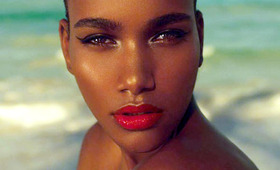
Stories
Brown Girl Beauty Myths: "Never Caught Dead In Red"
- 345
-

Stories
Brown Girl Beauty Myth: "Black Don't Crack"
- 223
-

Brown Girl Beauty
Brown and Fabulous
- 77
-
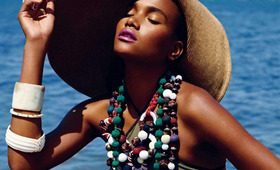
Cheeks
Does Your Makeup Go With Your Tan?
- 42
-
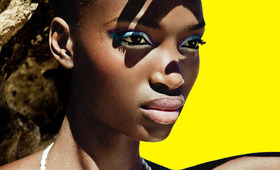
Sun Protection
Chocolate Is The New Tan
- 43
-
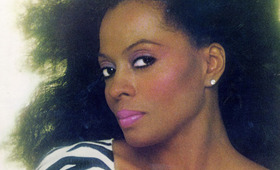
Brown Girl Beauty
Brown Girl Beauty: Back To The Future And Beyond
- 42
-
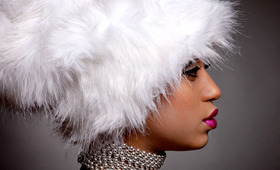
Brown Girl Beauty
Winter-proofing Brown Skin: Staying Bold in the Cold
- 397
-

Hair
Best Products For Styling Natural Hair
- 280





 Driven to infuse each encounter with joy-inducing laughter,
Driven to infuse each encounter with joy-inducing laughter, 

